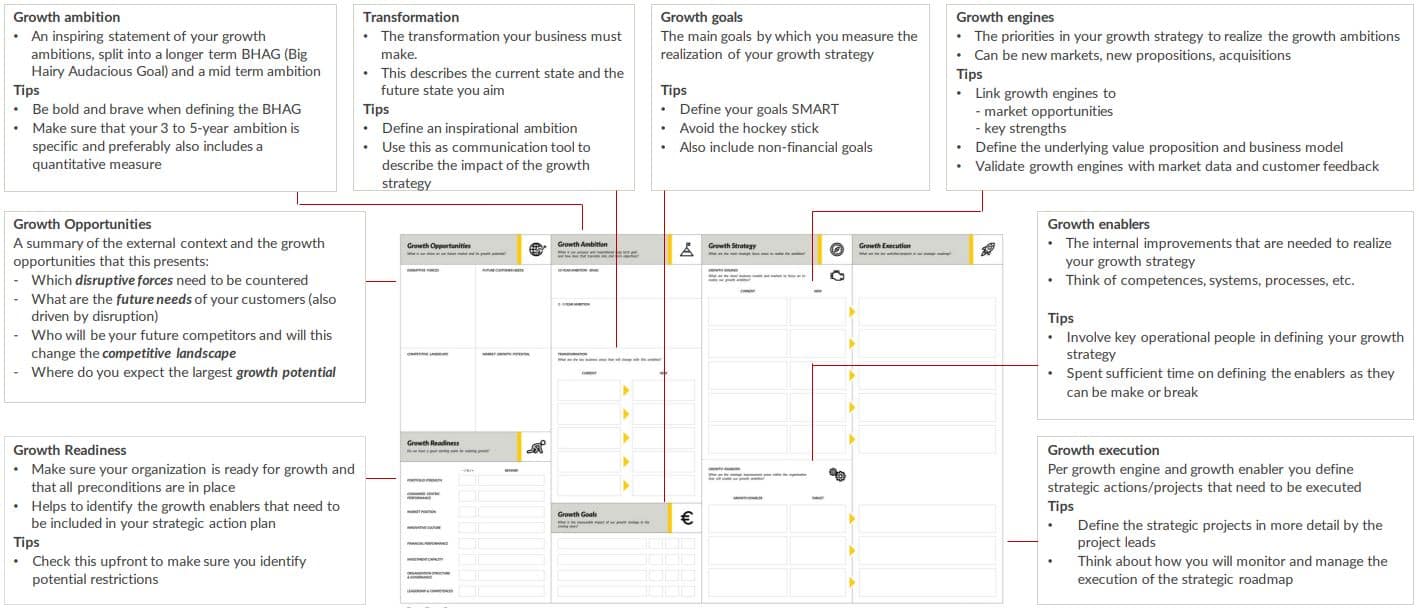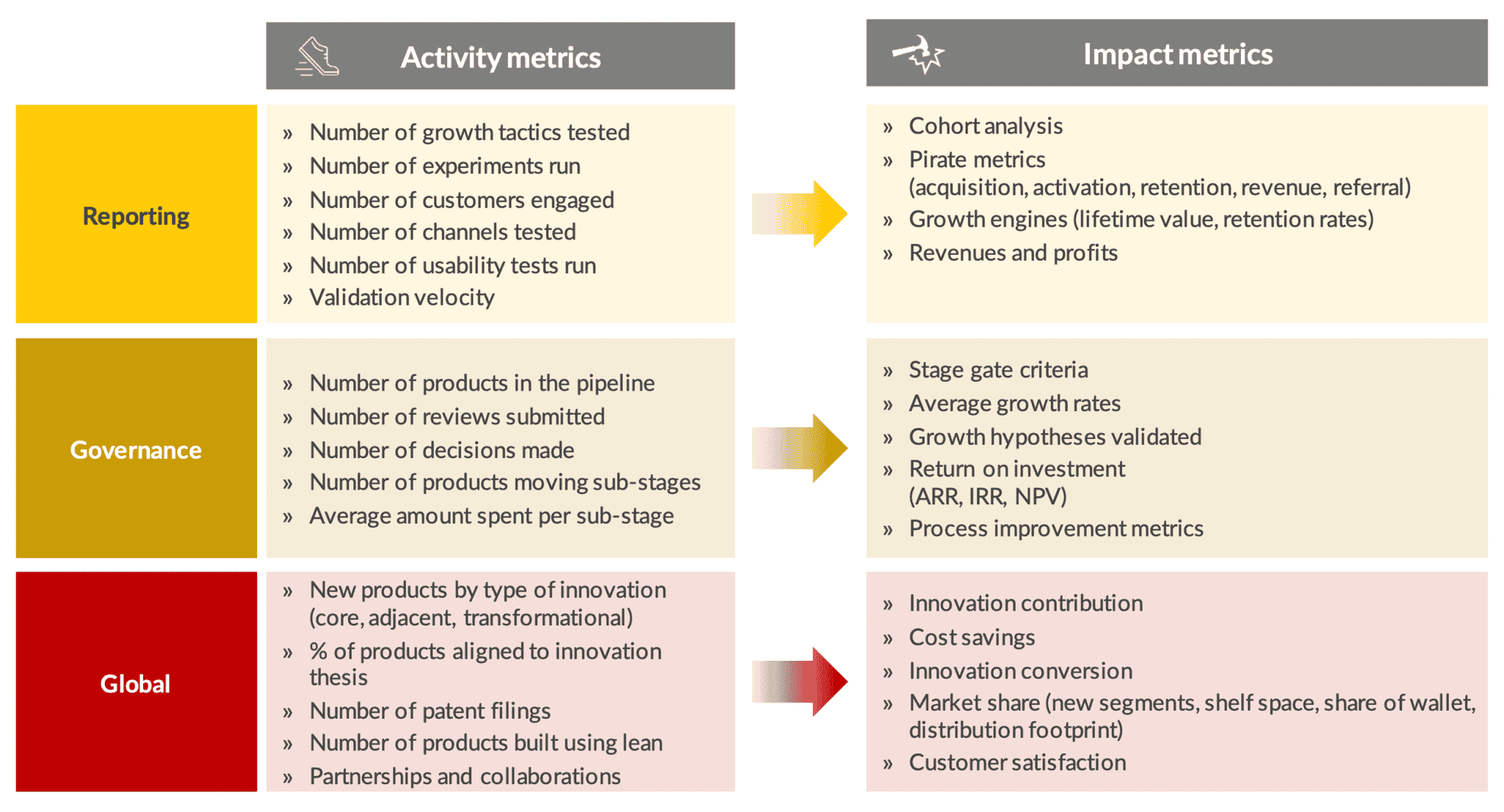Once you have established all three fits, you know you have an innovation with real and significant
market potential. Now is the time to start scaling and invest in generating large volumes of business:
scaling up. We recognize the following corporate scale-up challenges:
- Creating the right conditions for growth
- Balancing management of core business and innovations
- Turning on the right growth engines
Many organizations struggle in this phase. They either put off scaling for too long or they scale too soon.
Depending on which scenario you follow, you may miss the boat or crash prematurely. Scaling an
innovation requires careful consideration. “Don’t try to scale it until you nail it.” is a popular saying. Yet it
holds many truths. Especially in a corporate setting, too much focus on generating (early) revenues and
realizing return on investment is a major factor in premature scaling.
6 Pitfalls To Avoid When Scaling Up
1. Hand-over to business
Innovation managers run into trouble getting people to take ownership of innovations as they
become reality within the organization — particularly if those innovations disrupt the status quo or
bring big changes to how work gets done.
Solution: Decide early (ideation) on if and how hand-over takes place. You want that to be very scripted.
You want to know how and when that hand over happens, how you’ll release it from the
innovation side to the operation side. Involve future business owner’s early stage.
2. Misalignment with strategy
If your innovation initiatives aren’t aligned with business strategy, they fail to generate the value your organization needs.
Solution: Create an innovation profile that outlines goals, context and principles. Translate business goals into innovation projects to ensure a greater chance of gaining sponsorship, stamina and funding. The Growth Strategy Canvas is a great tool for this.
3. Risk aversion and internal politics
Fear of failure and missing the mark on quarterly goals can discourage creative and innovative thinking and premature killings.
Solution: Ensure that KPIs and incentives recognize that innovation is value-adding. Implement a culture that embraces failure as learning opportunities and encourages whitespace time.
4. Process gaps
Ambiguities about ownership and roles can lead to gaps that stagnate innovation. Leadership needs to take upon its role.
Solution: Avoid gaps between ideation, validation and scaling by embracing an innovation culture. Clear communication and shared responsibilities allow you to eliminate the common “drop-off points” in the innovation pipeline.
5. Lack of customer centricity
No matter how innovative a solution is, it will be dead on arrival if it lacks a compelling value proposition and feels to meet customers’ needs.
Solution: Ensure you have positively tested for all 3 validation tests: problem-solution fit, product-market fit and business model fit. Involve customers early and often in the development process and beyond. Use metrics to gauge traction.
6. Ineffective metrics
Inaccurate or ineffective metrics lead organizations astray and cause them to focus on the wrong objectives
Solution: Ensure that your metrics address 3 key areas: inputs and types of innovations going into the funnel, the flow rate through the funnel and the revenue and other quantifiable returns on investment at a later stage of the funnel.
Growth Strategy Canvas
The Growth Strategy Canvas is a helpful guide in preventing misalignment with strategy. It provides the organizational context and guidance for innovation. Most importantly, it makes the connection between innovation and the growth goals of an organization.

Validate, Pivot, and Scale Up Or Divest?
The last phase of the innovation process pertains to generating business value at scale. An innovation now enters the monetization phase.
Again, this phase shouldn’t be entered if there are no clear signs of problem-solution fit (are we addressing the right problems?), product-market fit (have we built something the market wants or needs?) and business model fit (can we produce at scale in a viable way?).
Pursuing an innovation in this stage without proper sign off on the three tests puts your money and company reputation at risk. So, proceed with caution and construct a sound growth plan.
Once again, are all three tests positive before you scale up?

Scaling requires a sound growth plan

Data Driven Decision Making?
Making objective decisions about innovation in a corporate setting requires data and a data driven mindset.
Decision making in an organization is often fraught with cognitive biases which are counter productive in many cases and outright dangerous in others.
When making decisions about innovation make sure you recognize the common cognitive biases and address them in your organization.
Common Cognitive Biases

Scale Up Accounting: From Activity To Impact Metrics
When scaling up an innovation one moves from activity metrics which are focused on progress of delivery towards impact metrics. Impact metrics are a set of leading and lagging indicators which are based on an innovation’s business viability.
The importance of metrics
Metrics are key in presenting measurable results to leadership. Being transparent on what innovations deliver drives trust and autonomy. Furthermore, being aware of the right metrics prevents innovations to be evaluated in the wrong way.

This is the fifth in a series of blogs on the RevelX Innovation Playbook where we demystify innovation and its challenges. It contains methods, tools, canvases and definitions any innovator needs to succeed.
Matthijs Rosman
Trusted and creative advisor. Specialist in growth acceleration and innovation. Combines analysis and creativity to develop surprising combinations. From new digital possibilities to ways to improve commercial results. Cordial towards others, sharp on details. Continuously looking for growth opportunities.
Related Posts
February 2, 2023
5 Reasons to Start With Innovation Portfolio Management Today
Increase your company’s revenue and…
January 6, 2023
Corporate Venturing: Why Does It Fail and How Can That Be Avoided?
Corporate venturing has a huge…





